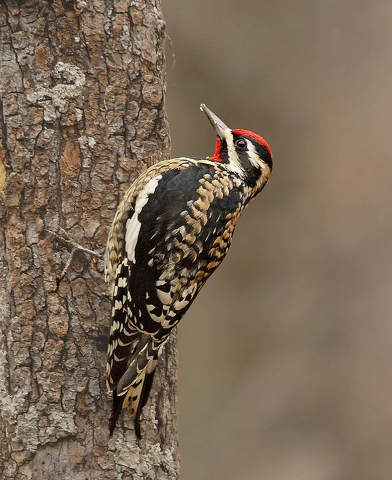111th annual bird count slated for Dec. 18
On Dec. 18 Grand Forks will join tens of thousands of volunteers throughout North America braving winter weather to add a new layer to over a century of data. The annual Christmas bird count (CBC) is the longest running citizen science survey in the world.
For many years, the Christmas bird count was organized at the continental scale by the National Audubon Society. Since 2000, Bird Studies Canada has partnered with Audubon to coordinate counts in Canada. Scientists rely on the remarkable trend data of the CBC to better understand how birds and the environment are faring throughout North America and what needs to be done to protect them. CBC results are at the heart of numerous peer-reviewed scientific studies.
“Each CBC volunteer observer is an important contributor, helping to shape the overall direction of bird conservation,” says Dick Cannings, Bird Studies Canada’s Christmas bird count co-ordinator. “Bird Studies Canada and our U.S. partners at Audubon rely on data from the CBC database to monitor bird populations across North America.”
The Christmas Bird Count began over a century ago when 27 conservationists in 25 localities, led by scientist and writer Frank Chapman, changed the course of ornithological history. On Christmas Day in 1900, the small group suggested an alternative to the “side hunt,” in which teams competed to see who could shoot the most game, including birds. Instead, Chapman proposed that they identify, count, and record all the birds they saw. Now binocular brigades often brave winter’s chill, ice, and snow to record changes in resident populations before spring migrants return. Counts are often family or community traditions that make for fascinating stories. Accuracy is assured by having new participants join an established group that includes at least one experienced birdwatcher. Count volunteers follow specified routes through a designated 24-kilometre diameter circle, or can arrange in advance to count the birds at home feeders inside the circle and submit the results to a designated compiler. All individual Christmas bird counts are conducted between Dec. 14 and Jan. 5 each season, with each individual count occupying a single calendar day. From feeder-watchers and field observers to count compilers and regional editors, everyone who takes part in the Christmas bird count does it for love of birds and the excitement of friendly competition and with the knowledge that their efforts are making a difference for science and bird conservation. CBC data not only helps identify birds in most urgent need of conservation action; it reveals success stories. The Christmas Bird Count helped document the comeback of the previously endangered Bald Eagle, and significant increases in waterfowl populations, both the result of conservation efforts. Please contact one of the following for details about the local count: Jenny Coleshill at 250-442-7969 or Eva Anthony 250-442-5334, or the Granby Wilderness Society’s web site at www.granbywilderness.ca. The Christmas Bird Count is made possible in Canada, in part, by generous support from The EJLB Foundation. CBC compilers enter their data at www.audubon.org/bird/cbc where you will see real-time updates.
For more information about CBC participation, visit Bird Studies Canada’s website at http://www.birdscanada.org/volunteer/cbc and click on the “Look For a Count Near You” link on the left-hand side of the page.






















